Though the solid fresh green colour of the boat really was appealing, the glare was pretty apparent, and for duck hunting purposes it would likely be better to have some drab colour on there. So I decided to try my hand at putting a gentle camo pattern on.
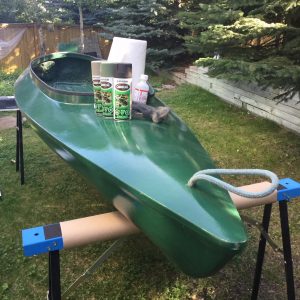
The Rust-Oleum camo spray cans were surprisingly hard to find. I had to go to three hardware stores to get three colours: brown, tan, and light green.
The process was pretty straightforward. After a quick scrub down with steel wool and rubbing alcohol, the boat was sprayed with a base layer of varying colours; four areas of solid colour covered the whole thing. Then I used dry cat tail stems and leaves as a stencil of sorts, spraying contrasting colours across the leaves. For sharp edges, the leaves would lay flush with the boat, for a more fuzzy effect I’d hold them up a little higher. In general, I didn’t give it too much thought, and fought my inner perfectionist from overworking the colours. Just flop on the plant material, and with quick squirts from left to right and back, get some paint on.
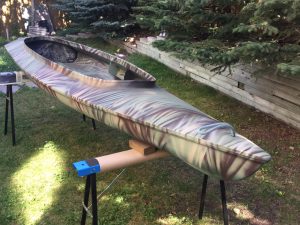
For example, on the stern of the boat, the pattern was achieved by laying a base coat of brown and green, and then spraying a layer of tan with leaves/cattails held in front of it. The tan went through the openings in the plants, leaving the darker base colours to show through on the boat. It’s a lot easier to do than it is to describe.
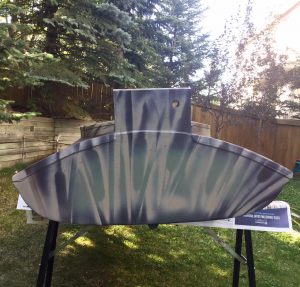
The final touch (for now) was to add a cross bar, which would serve as a rest for the gun barrel(s). I didn’t feel comfortable laying a loaded shotgun down flat on the bottom of the boat, because an accidental discharge (never happens, right?) would have some very wet and potentially life threatening results.
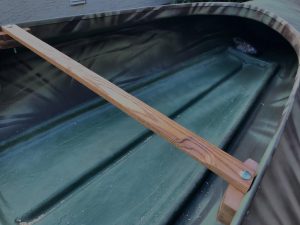
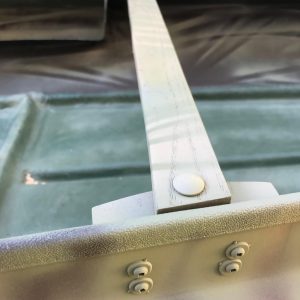
A few final squirts of camo paints, and she was all done. Well, almost; I added a strip of rubber on the right side of the cross bar to be gentler on the gun’s finish.
The boat was ready, and duck season was just around the corner (see part V – Finale).